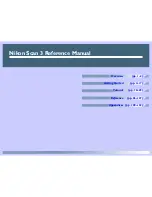
Chapter 11 Logs and Reports
Logging Formats
11-2
User Guide for Cisco Secure ACS for Windows Server
78-16592-01
Logging Formats
Cisco Secure ACS logs a variety of user and system activities. Depending on the
log, and how you have configured Cisco Secure ACS, logs can be recorded in one
of two formats:
•
Comma-separated value (CSV) files
—The CSV format records data in
columns separated by commas. This format is easily imported into a variety
of third-party applications, such as Microsoft Excel or Microsoft Access.
After data from a CSV file is imported into such applications, you can prepare
charts or perform queries, such as determining how many hours a user was
logged in to the network during a given period. For information about how to
use a CSV file in a third-party application such as Microsoft Excel, please see
the documentation supplied by the third-party vendor. You can access the
CSV files either on the Cisco Secure ACS server hard drive or by
downloading the CSV file from the HTML interface. For more information
about downloading the CSV file from the HTML interface, see
Viewing a
CSV Report, page 11-18
.
•
ODBC-compliant database tables
—ODBC logging enables you to
configure Cisco Secure ACS to log directly in an ODBC-compliant relational
database, where it is stored in tables, one table per log. After the data is
exported to the relational database, you can use the data however you need.
For more information about querying the data in your relational database,
refer to the documentation supplied by the relational database vendor.
For information about the formats available for a specific log, see
About
Cisco Secure ACS Logs and Reports, page 11-6
.
Special Logging Attributes
Among the many attributes that Cisco Secure ACS can record in its logs, a few are
of special importance. The following list explains the special logging attributes
provided by Cisco Secure ACS.
•
User Attributes
—These logging attributes appear in the Attributes list for
any log configuration page. Cisco Secure ACS lists them using their default
names: Real Name, Description, User Field 3, User Field 4, and User Field 5.
If you change the name of a user-defined attribute, the default name rather
than the new name still appears in the Attributes list.
















































